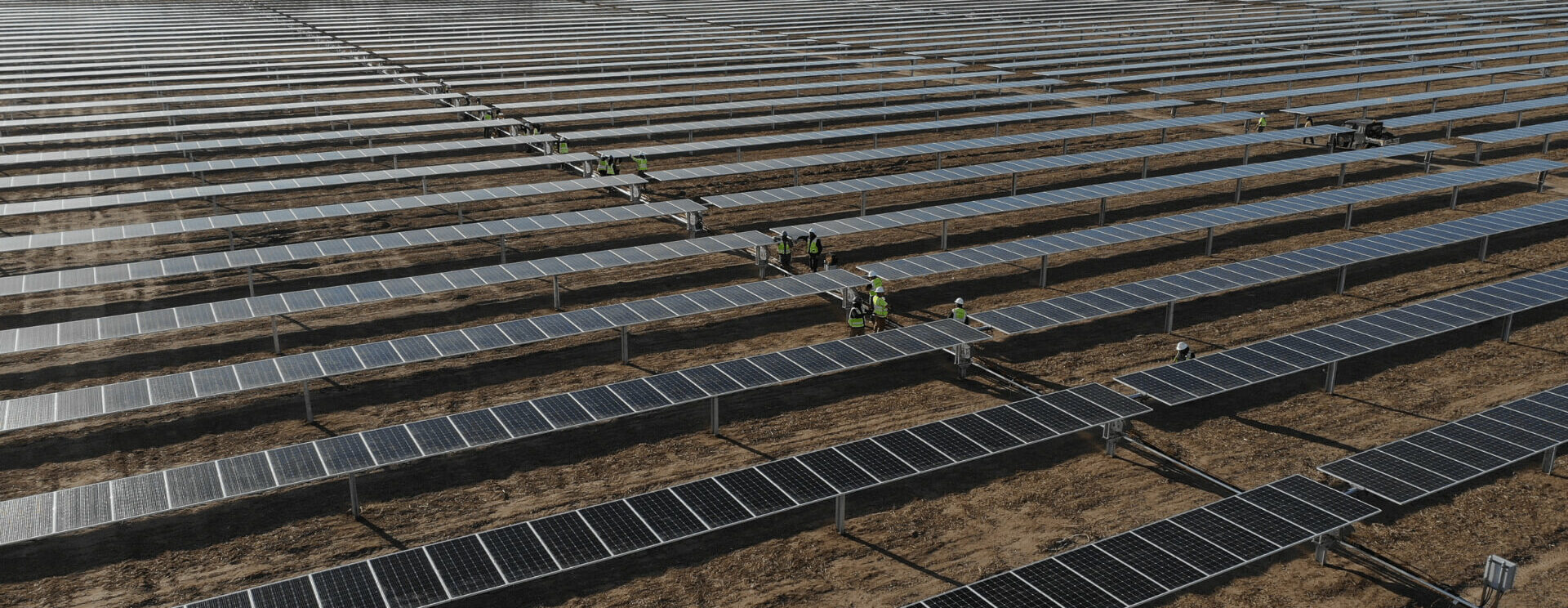How today’s technology can help solar bridge the emissions gap
Getting more renewables connected as quickly as possible is at the heart of many nation’s climate plans. But doing so at a rate fast enough to get the world back on track to limit warming to 1.5°C is challenging.
The world needs to do more. And fast.
Parties to the UN’s climate negotiations lay out their plans in documents called Nationally Determined Contributions (NDCs). At last year’s COP26 in Glasgow, governments pledged greater action. So far additional pledges made in 2022 amount to an extra 1% of emission reductions by 2030, leading UNEP to state that there is “no credible path” to the 1.5°C limit as it stands.
Those pledges need to be improved and in many cases accelerated renewable deployment will be the headline act. Business as usual is not enough. A concept Lightsource bp is fully aware of as we pursue our own target of delivering 25GW by 2025.
Happily – existing technology, impending upgrades and smarter utilisation mean solar power is positioned to deepen the potential of its own impact.
Ambitious on energy storage
Most important is the role energy storage can play. Batteries aren’t just for storage. Power grids are sensitive systems. They work best when the frequency of the electricity is within a very narrow range. They can react badly to sudden peaks – or troughs – in output.
Lightsource bp is targeting the development of 4GW of energy storage by 2025.
Essentially, the network’s power needs to be working with very specific parameters. Batteries are like the Rosetta stone for this unspoken language. If one part of the network drops out of line, a precise correction from a battery can keep things on track. These grid services protect networks from the extra variability created by having lots of renewable energy online. The flexibility they afford supports a greater mix of generation types and reduces the need to keep conventional power sources running.
“Decarbonisation and electrification plans cannot be achieved if we can’t control our grid,” says Sara Kayal, Head of PV integrated solutions and the lead on energy storage for Lightsource bp. “Furthermore, as we experience more extreme weather events, adding storage also adds resiliency to the grid”
“Lightsource bp has very aggressive solar targets, adding storage as co-located assets will enable the grid to add this additional capacity while addressing other short-term grid service applications, such as ancillary services like frequency regulation and black start capabilities,” she adds.
Solar technology still has more to come
The foundational principles behind solar panels are well-proven but a number of iterative improvements and changes to the recipe of materials inside the panels can provide great improvements. From conversion efficiencies of around 20% in operation today, Lightsource bp expects the panels it uses in 2030 to be closer to 30%. That means the same project, with the same footprint and exposed to the same sunlight would generate half as much power again with that shift in technology.
We’re already at the forefront of that journey installing the latest ‘TOPCon’ solar panels for the first time on our Tiln Farm project in the UK.
Solar trackers, which adjust the angle of the panels in lock step with the movements of the sun, boost output and help generate more power when the sun is lower in the sky. Our US team has also pioneered a system to offset the potential damage by extreme weather, a phenomenon exacerbated by climate change.
Related news
14 Jul, 2025
Lightsource bp supports UK Government’s decision to retain national pricing in electricity market reform
Lightsource bp congratulates the UK Government’s decision to retain a national wholesale electricity pricing model.
30 Jun, 2025
A solar-powered UK: Roadmap outlines path to 2030 objective
In excellent news for the UK solar industry, the Government has published the Solar RoadMap for a 'United Kingdom powered by Solar'.
26 Jun, 2025
SolarPower Europe launches Global Market Outlook for Solar Power 2025-2029
Read our summary of SolarPower Europe’s Global Market Outlook for Solar Power 2025-2029.




